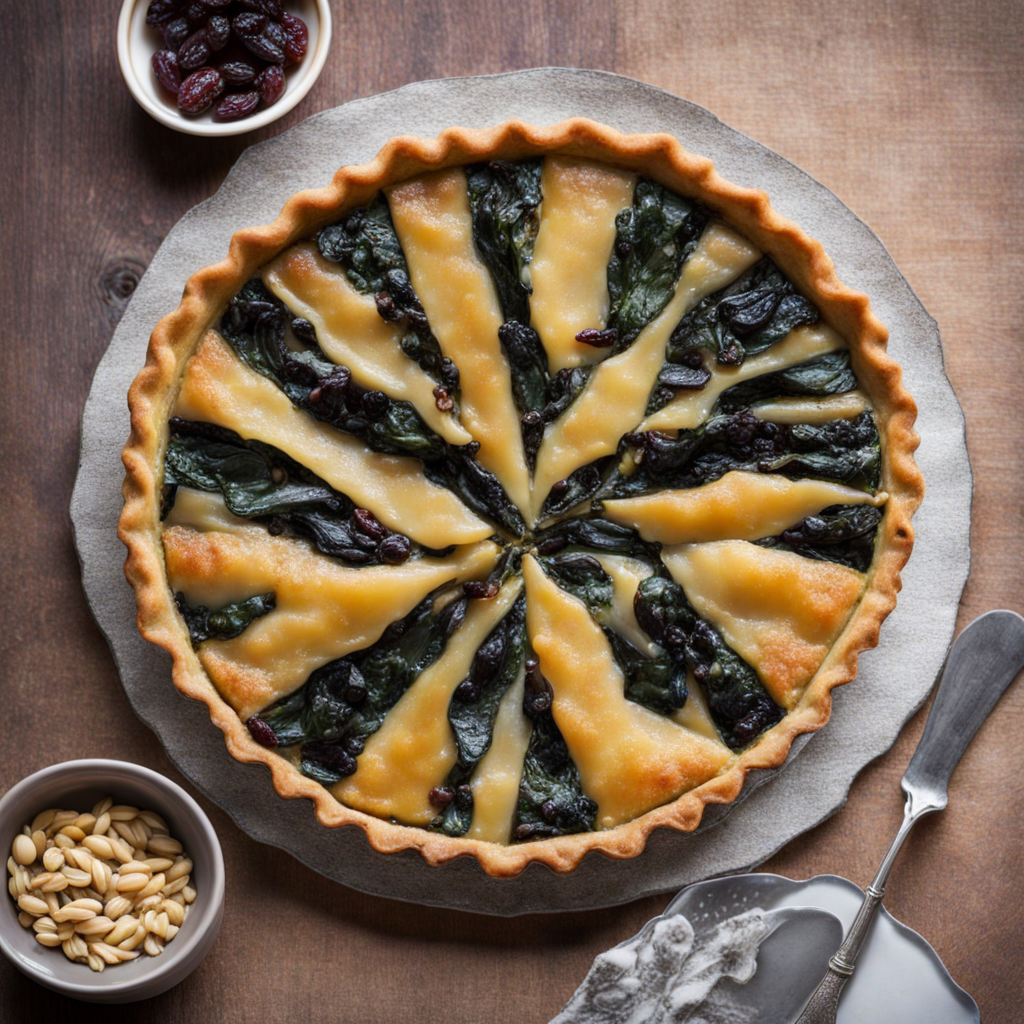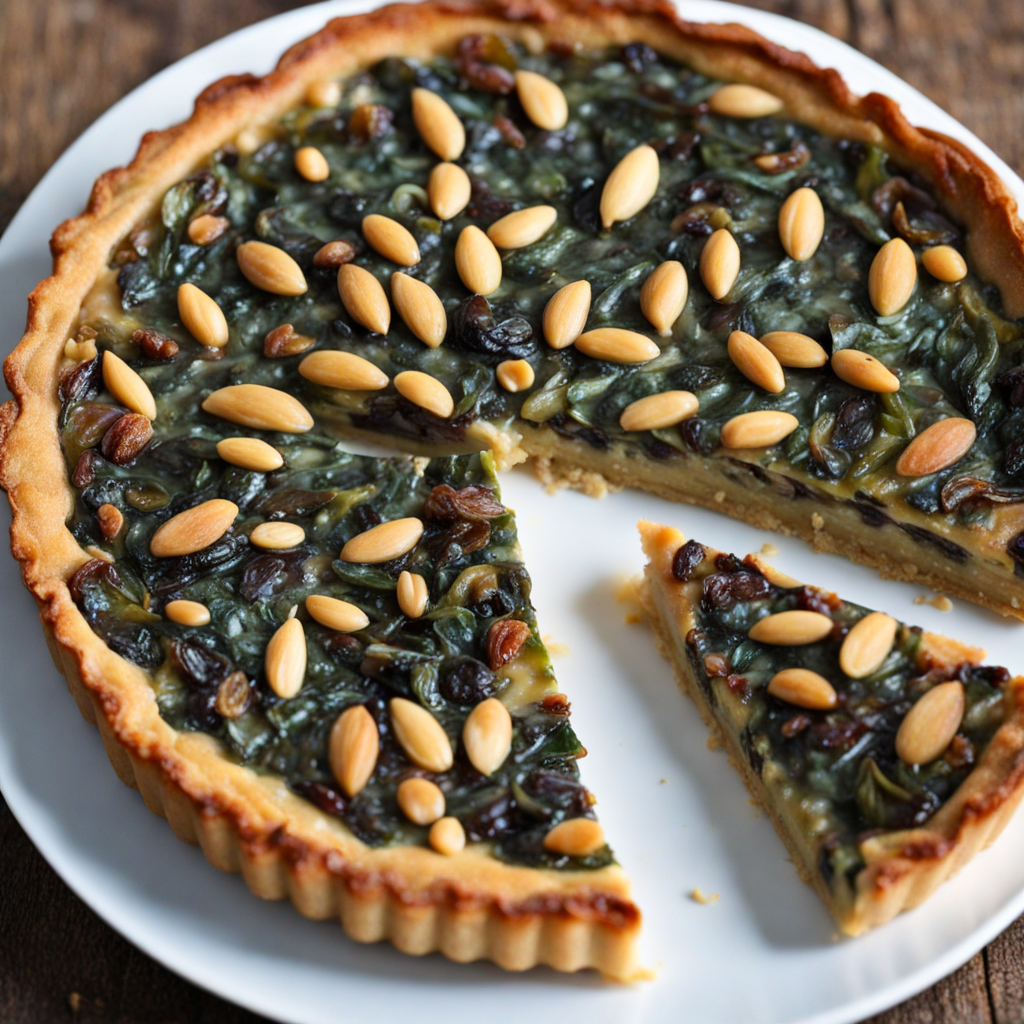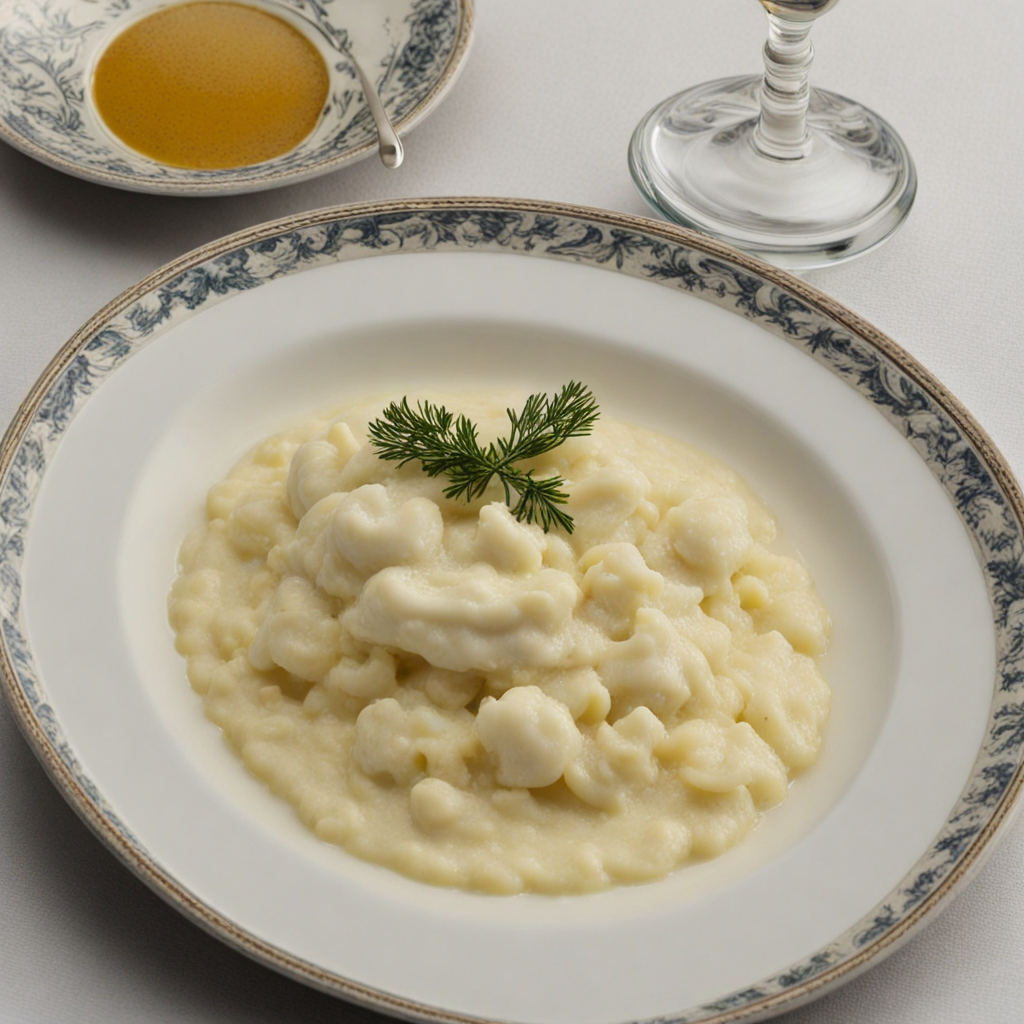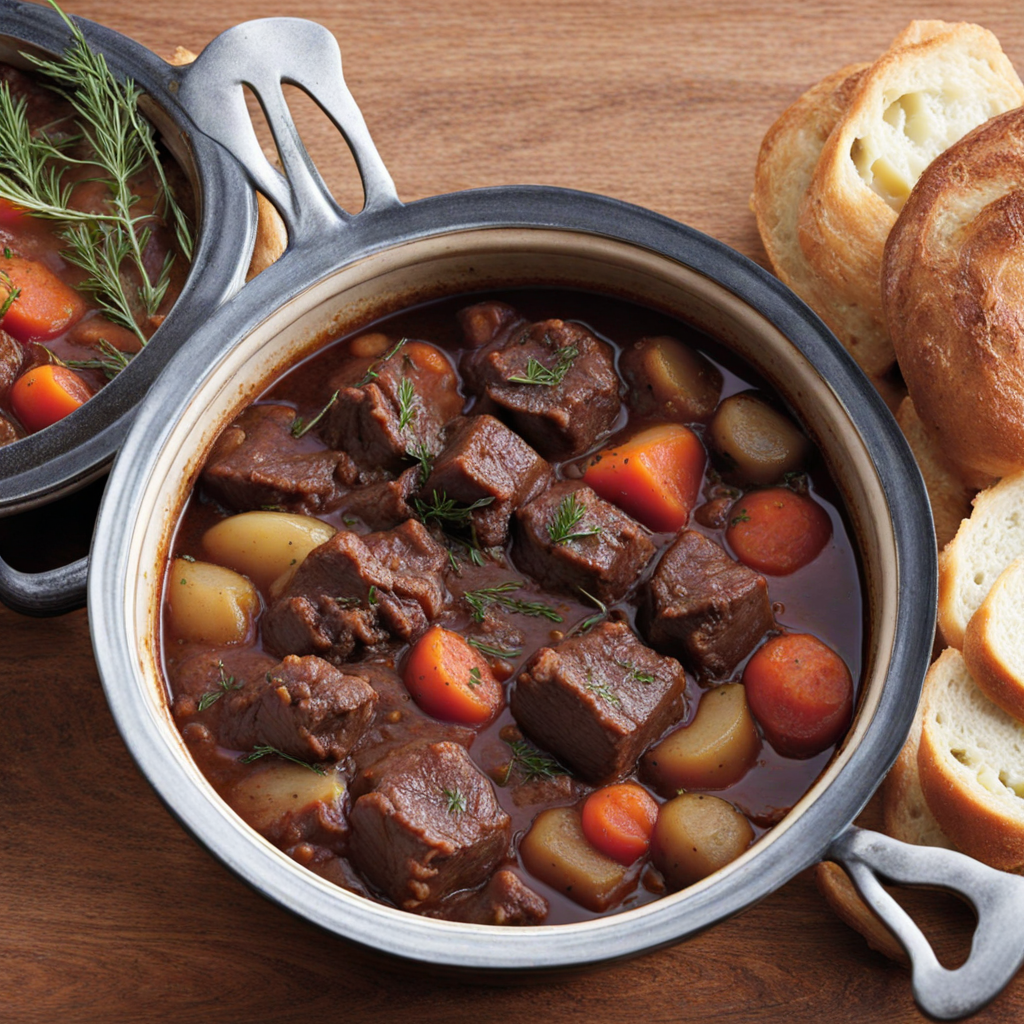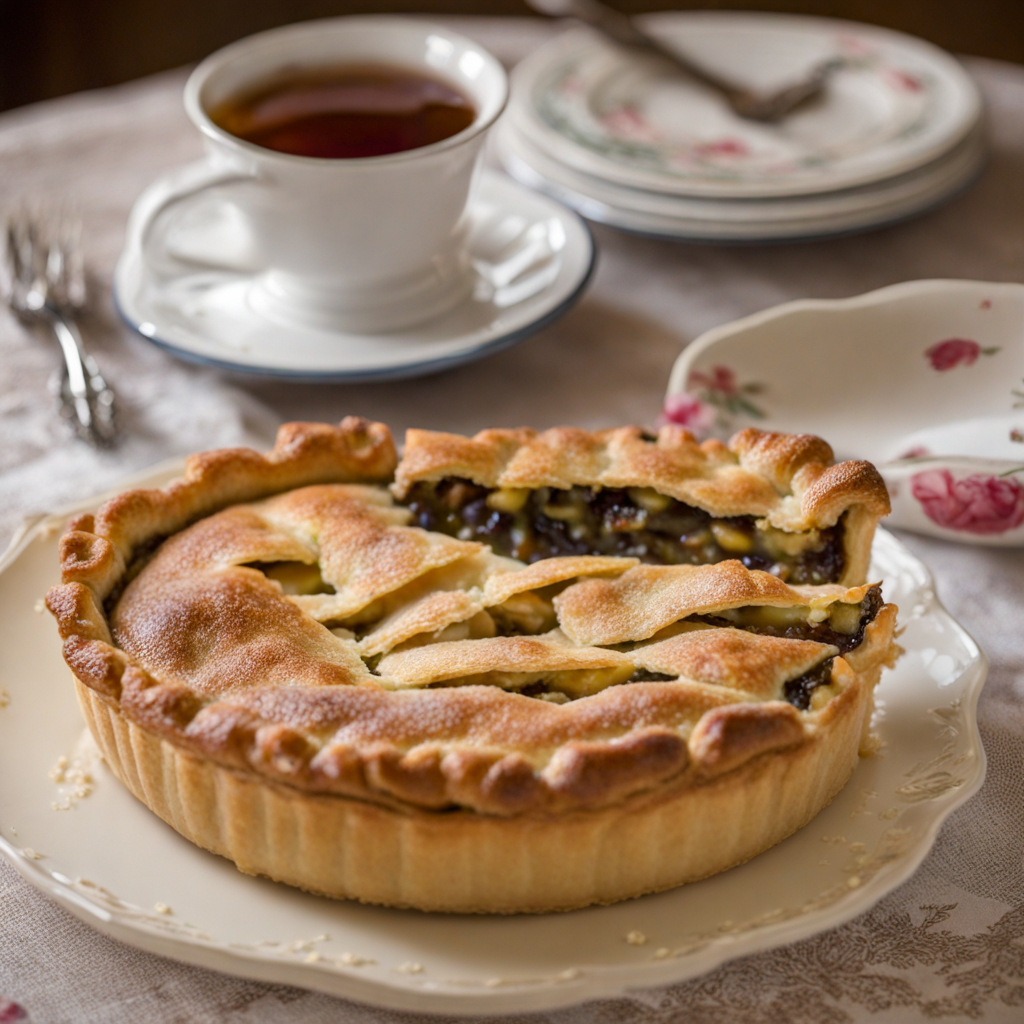Tarte aux Blettes
Tarte aux Blettes is a traditional dish hailing from the picturesque principality of Monaco, celebrated for its harmonious blend of sweet and savory flavors. This unique tart showcases the versatility of Swiss chard, or “blettes” in French, which is the star ingredient. Although Swiss chard is often overlooked in culinary circles, it has been cherished in Mediterranean cuisine for centuries, finding its way into various dishes across Italy, France, and beyond. In Monaco, the tart reflects not only the local agricultural bounty but also the region's rich culinary heritage, where sweet and savory combinations are a hallmark. The flavor profile of Tarte aux Blettes is intriguing and multifaceted. The Swiss chard contributes a slightly earthy and mildly bitter flavor that is beautifully counterbalanced by the addition of sugar, which infuses the dish with sweetness. The tart also typically includes a hint of cinnamon or nutmeg, which adds warmth and depth to the flavor. The texture is a delightful contrast between the tender greens and the crisp, buttery pastry crust, making each bite an engaging experience. Some variations even incorporate raisins or pine nuts, providing additional layers of flavor and texture. Preparation of Tarte aux Blettes involves several steps, beginning with the creation of a shortcrust pastry. The pastry is made with flour, butter, salt, and water, kneaded gently to maintain its flakiness. Once the dough is prepared, it is rolled out and fitted into a tart pan. The Swiss chard is then washed
How It Became This Dish
Tarte aux Blettes: A Culinary Gem of Monaco Tarte aux Blettes, also known as Swiss Chard Tart, is a delightful pastry that encapsulates the rich culinary traditions of Monaco. This dish, simple yet sophisticated, reflects the region's agricultural heritage, cultural influences, and evolving gastronomic practices. Its history is a testament to the interplay between local ingredients and the creative ingenuity of Monegasque cooks, making it a beloved specialty that continues to charm both locals and visitors alike. #### Origins The roots of Tarte aux Blettes can be traced back to the early 19th century, a time when Monaco was transitioning from a small principality to a more recognized entity in the Mediterranean. The tart showcases Swiss chard, a leafy green that thrives in the Mediterranean climate, and was readily available to local farmers. Unlike many other greens, Swiss chard is resilient, growing vigorously in the region's varied soil types, making it a staple in Monegasque kitchens. Swiss chard itself has a long history, dating back to antiquity. It was cultivated by the ancient Greeks and Romans, who valued it not only for its culinary versatility but also for its medicinal properties. By the time Tarte aux Blettes emerged, Swiss chard had firmly established itself in the Mediterranean diet, easily adapting to the flavors and cooking styles of various cultures. #### Cultural Significance In Monaco, Tarte aux Blettes is more than just a dish; it is a symbol of Monegasque identity and tradition. The tart is particularly associated with the local harvest and is often prepared during the fall, when Swiss chard is at its peak. Families gather to make this dish, passing down recipes through generations, making it a cherished part of communal culinary practices. The tart’s preparation often involves a family affair, where members participate in the process of cleaning the chard, making the dough, and assembling the tart. This communal aspect highlights the social nature of food in Monaco, where meals are occasions for bonding and celebration. Tarte aux Blettes is often served during festive occasions and local celebrations, further cementing its role in the culture and heritage of the principality. The tart also reflects the broader Mediterranean culinary ethos, which emphasizes fresh, local ingredients and the importance of seasonality. In Monaco, where the sea meets the mountains, the diversity of local produce is celebrated, and Tarte aux Blettes embodies this connection to the land. #### Ingredients and Preparation Traditionally, Tarte aux Blettes is made with a flaky pastry crust that envelops a savory filling of Swiss chard, eggs, ricotta or other cheeses, sugar, and sometimes, pine nuts and raisins. The balance of savory and sweet flavors is a hallmark of Monegasque cuisine, reflecting the region’s historical interactions with neighboring Italian and French culinary traditions. The preparation of the tart begins with the dough, which is typically made from flour, butter, and water, crafted to create a tender, flaky base. The Swiss chard is then blanched, chopped, and mixed with the other ingredients, creating a filling that is both hearty and refreshing. The tart is baked until golden, resulting in a dish that is crispy on the outside and flavorful on the inside. #### Evolution Over Time As Monaco has evolved, so too has Tarte aux Blettes. The tart has adapted to changing tastes and culinary trends, incorporating new ingredients and techniques while still respecting its traditional roots. In recent years, there has been a resurgence of interest in local and heritage foods, driven by a growing awareness of sustainability and culinary heritage. This has led to a revival of Tarte aux Blettes, with chefs and home cooks alike experimenting with variations that highlight the versatility of the tart. Modern interpretations may include the use of different types of cheese—such as goat cheese or feta—in place of the traditional ricotta, or the addition of other seasonal vegetables to enhance the filling. Some chefs have even ventured into the realm of gourmet cuisine, presenting Tarte aux Blettes with innovative twists that showcase contemporary culinary techniques while remaining true to its origins. The tart’s popularity has also extended beyond Monaco’s borders, with food enthusiasts and chefs from various regions taking inspiration from its flavors. As travel and culinary exchange continue to flourish, Tarte aux Blettes is increasingly recognized as a dish worthy of exploration, appearing on menus in restaurants across Europe and beyond, often served as a testament to the rustic charm of Monegasque cuisine. #### Conclusion Tarte aux Blettes stands as a delicious emblem of Monaco’s culinary heritage, intertwining history, culture, and the bounty of the land. From its humble beginnings as a way to utilize local produce to its status as a cherished dish enjoyed during festive occasions, it represents the essence of Monegasque gastronomy. The tart not only nourishes the body but also nourishes the soul, fostering connections among families and communities. As it continues to evolve, Tarte aux Blettes remains a delicious reminder of Monaco's rich culinary traditions and the ongoing dialogue between the past and the present. Whether enjoyed in a quaint café in Monaco or recreated in kitchens around the world, Tarte aux Blettes captures the spirit of a region that values its agricultural heritage, community, and the simple pleasure of good food.
You may like
Discover local flavors from Monaco


